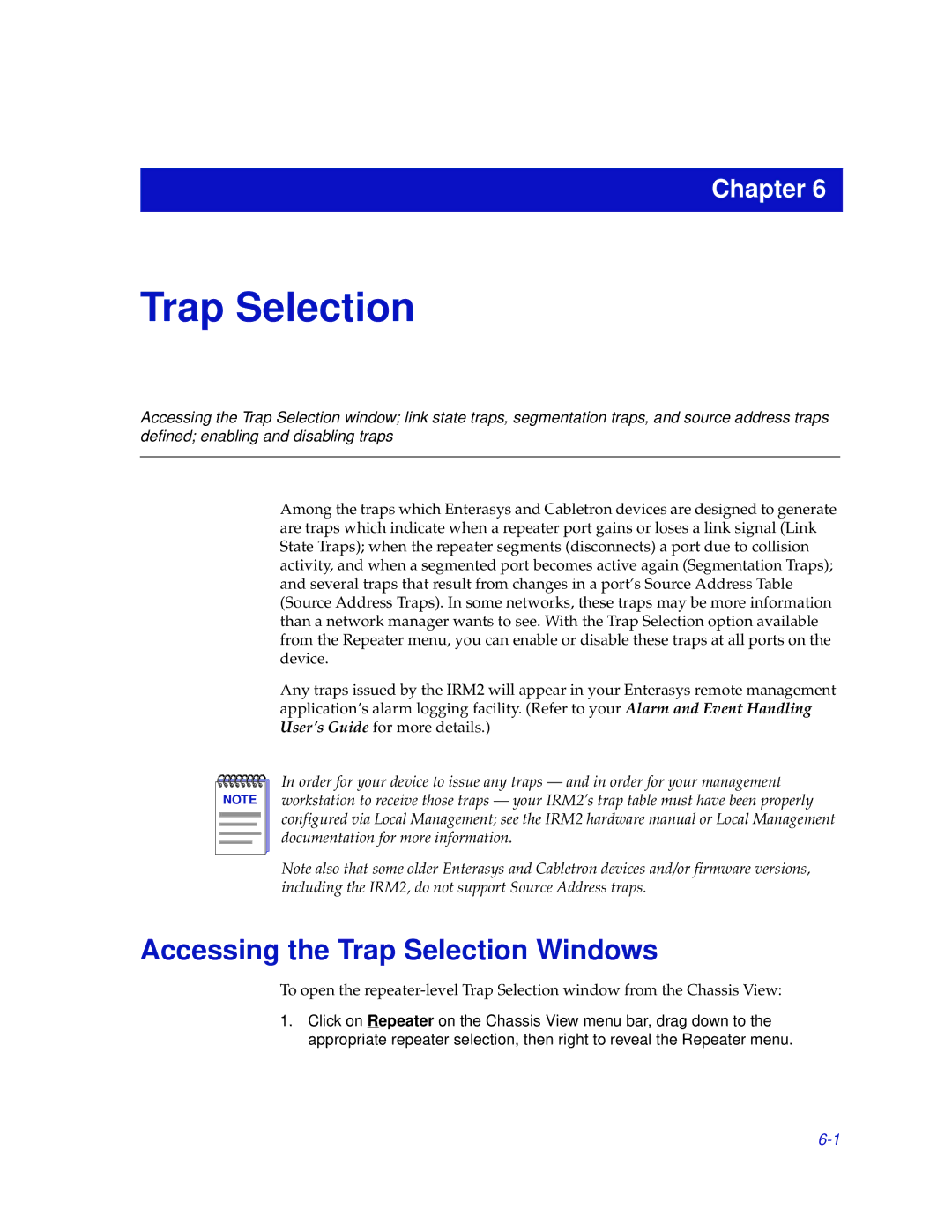
Chapter 6
Trap Selection
Accessing the Trap Selection window; link state traps, segmentation traps, and source address traps defined; enabling and disabling traps
Among the traps which Enterasys and Cabletron devices are designed to generate are traps which indicate when a repeater port gains or loses a link signal (Link State Traps); when the repeater segments (disconnects) a port due to collision activity, and when a segmented port becomes active again (Segmentation Traps); and several traps that result from changes in a port’s Source Address Table (Source Address Traps). In some networks, these traps may be more information than a network manager wants to see. With the Trap Selection option available from the Repeater menu, you can enable or disable these traps at all ports on the device.
Any traps issued by the IRM2 will appear in your Enterasys remote management application’s alarm logging facility. (Refer to your Alarm and Event Handling User’s Guide for more details.)
NOTE |
In order for your device to issue any traps — and in order for your management workstation to receive those traps — your IRM2’s trap table must have been properly configured via Local Management; see the IRM2 hardware manual or Local Management documentation for more information.
Note also that some older Enterasys and Cabletron devices and/or firmware versions, including the IRM2, do not support Source Address traps.
Accessing the Trap Selection Windows
To open the
1.Click on Repeater on the Chassis View menu bar, drag down to the appropriate repeater selection, then right to reveal the Repeater menu.
